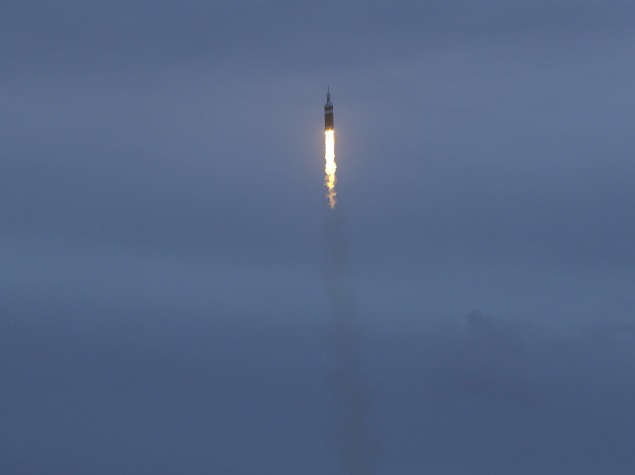- Home
- Science
- Science News
- Isro's GSAT 16 Communications Satellite Launched Successfully Into Orbit
Isro's GSAT-16 Communications Satellite Launched Successfully Into Orbit

The Ariane 5 rocket also carried the US telecommunications satellite DIRECTV-14 into orbit.
The launch, which was delayed for two days owing to bad weather, took place at 08.40pm GMT (2:10am IST). This was the sixth launch of its kind so far this year.
Weighing 3,181.6kg, GSAT 16, designed by the Indian Space Research Organisation (Isro) carries 48 transponders automatic receivers and transmitters for communication and broadcast of signals.
The GSAT-16 is equipped with Ku and C-band transponders to boost telecommunication transmissions on the Indian subcontinent, Arianespace said.
The satellite is the 11th among GSAT series and the 24th geostationary communication satellite with a lifespan of 12 years.
"GSAT-16 will replace the INSAT-3E, which expired in April," Isro satellite centre director S. Shiva Kumar had said.
The satellite will be placed at 55 degrees east over India in a geostationary orbit, about 36,000km above the earth.
With a total of 168 transponders in the C, extended C and Ku-bands, the INSAT and GSAT series of satellites provide services like telecommunication, television broadcasting, weather forecasting, disaster warning and search and rescue operations.
India uses Ariane rockets to put its heavy communication satellites in geosynchronous transfer orbit (GTO) as it does not have a rocket to carry a three-tonne satellite.
Isro is developing one such rocket called the Geosynchronous Satellite Launch Vehicle-Mark III.
The US satellite DIRECTV-14, which was also carried into orbit by the Ariane 5 rocket, will provide high-definition images to 31 million television viewers in the US and Latin America.
Catch the latest from the Consumer Electronics Show on Gadgets 360, at our CES 2026 hub.
- Samsung Galaxy Unpacked 2025
- ChatGPT
- Redmi Note 14 Pro+
- iPhone 16
- Apple Vision Pro
- Oneplus 12
- OnePlus Nord CE 3 Lite 5G
- iPhone 13
- Xiaomi 14 Pro
- Oppo Find N3
- Tecno Spark Go (2023)
- Realme V30
- Best Phones Under 25000
- Samsung Galaxy S24 Series
- Cryptocurrency
- iQoo 12
- Samsung Galaxy S24 Ultra
- Giottus
- Samsung Galaxy Z Flip 5
- Apple 'Scary Fast'
- Housefull 5
- GoPro Hero 12 Black Review
- Invincible Season 2
- JioGlass
- HD Ready TV
- Laptop Under 50000
- Smartwatch Under 10000
- Latest Mobile Phones
- Compare Phones
- Honor Win RT
- Honor Win
- Xiaomi 17 Ultra Leica Edition
- Xiaomi 17 Ultra
- Huawei Nova 15
- Huawei Nova 15 Pro
- Huawei Nova 15 Ultra
- OnePlus 15R
- Asus ProArt P16
- MacBook Pro 14-inch (M5, 2025)
- OPPO Pad Air 5
- Huawei MatePad 11.5 (2026)
- Xiaomi Watch 5
- Huawei Watch 10th Anniversary Edition
- Acerpure Nitro Z Series 100-inch QLED TV
- Samsung 43 Inch LED Ultra HD (4K) Smart TV (UA43UE81AFULXL)
- Asus ROG Ally
- Nintendo Switch Lite
- Haier 1.6 Ton 5 Star Inverter Split AC (HSU19G-MZAID5BN-INV)
- Haier 1.6 Ton 5 Star Inverter Split AC (HSU19G-MZAIM5BN-INV)












